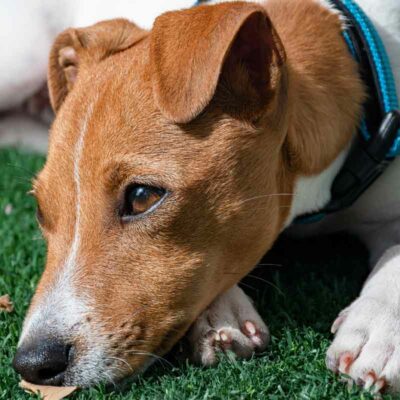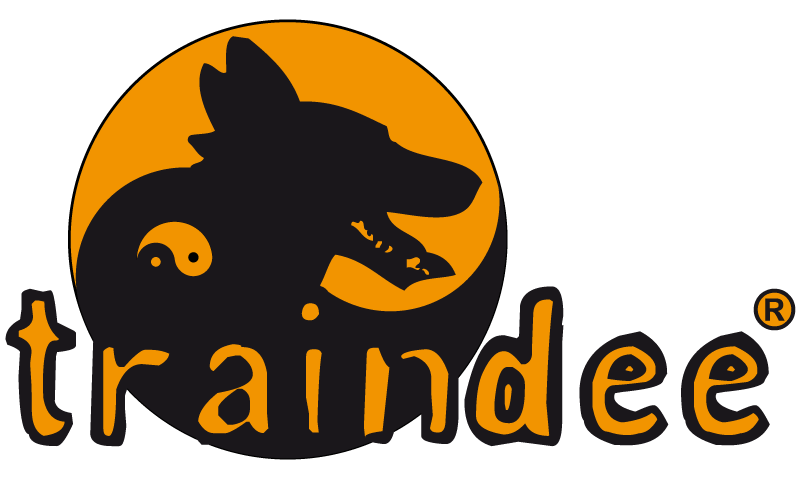The Jack Russel Terrier Dog breed

The Jack Russell terrier, often lovingly called the JRT, is a small yet robust and exuberant breed. Standing at just about a foot tall, these dogs are a powerhouse of personality and adventure, encapsulated in their compact, muscular bodies.
Blending their agility as hunting dogs with their infectious fun-loving nature, the JRT serves as both a spirited hunting companion and an affectionate family member. However, don’t underestimate their small stature; these dogs possess remarkable stamina and determination, making them a challenge for inexperienced dog owners.
Key Characteristics of the Jack Russell Terrier
While Jack Russell terriers often thrive in family settings, it’s crucial to instill proper obedience and teach children to establish boundaries. These dogs are playful and fun-loving, which makes them exceptional companions for active families. However, their intense prey drive might pose challenges in households with small pets like cats. To ensure a well-rounded pet, early and consistent socialization is essential.
Historical Origins of the Jack Russell Terrier
The inception of the Jack Russell terrier can be traced back to England in the mid-to-late 1800s when a need arose for a small yet spirited fox-hunting dog. While foxhounds had gained popularity among the English elite for horse-and-hound hunting, a pastor named John Russell recognized the necessity for a compact terrier capable of pursuing foxes underground. This realization led to the commencement of a selective breeding program with the sole objective of creating a tenacious but diminutive hunter.
Historical records of Russell’s breeding efforts are scarce. The pastor, an avid huntsman, aimed to craft a fox hunting companion, unwittingly giving birth to an entirely new breed. The resulting dogs were initially known as fox terriers, a term used for various fox-hunting dogs of the era.
The Jack Russell terrier rapidly gained prominence, and it was named after its founding father, John Russell. These small, agile dogs were bred for speed, allowing them to keep up with mounted hunters. Their signature terrier tenacity made them proficient in hunting foxes, raccoons, woodchucks, and other small game. They played a crucial role in tandem with larger foxhounds: the larger dogs pursued the fox until it retreated to its den, and the JRT flushed it out, sustaining the chase.
It was not unusual for hunters to carry these pocket-sized hunting dogs in saddlebags on long journeys. Their compact size and formidable capabilities eventually led to the establishment of the Jack Russell terrier as a breed in its own right. Over time, the JRT found its way to the United States, with records suggesting recognition in the country by the 1930s.
A dedicated community of JRT enthusiasts flourished, culminating in the formation of the Jack Russell Terrier Club of America in 1976. The organization aimed to promote and safeguard the breed, maintaining the official registry. The JRTCA is dedicated to preserving the breed’s working heritage and remains firmly opposed to AKC or any other kennel club registration.
However, not all JRT enthusiasts share the JRTCA’s stance. Some JRT owners advocated for AKC recognition. In 1997, the AKC officially recognized the Parson Russell terrier, a new breed. Jack Russell terriers that met specific criteria for the new breed standard became eligible for AKC registration. Additionally, another JRT derivative, the smaller Russell terrier, gained AKC recognition in 2012.
Jack Russell terrier purists align themselves with the JRTCA, emphasizing the breed’s standard and registry. The club hosts various competitions, providing breed enthusiasts with opportunities to showcase their terriers’ strengths and gain recognition within the breed community. These competitions include conformation, go-to-ground, trailing and locating, racing, agility, and obedience.
Jack Russell Terrier Care
If you’re contemplating adding a Jack Russell terrier to your family, be prepared to invest the time and effort necessary to keep this spirited pup happy and well-adjusted. While Jack Russell terrier puppies are incredibly adorable, they grow into energetic and athletic dogs that demand a significant commitment in terms of exercise, mental stimulation, and training.
Exercise
When discussing the care of a Jack Russell terrier, it’s crucial to underscore the importance of exercise. Despite their small size, these dogs have substantial exercise requirements. They are far from typical lap dogs, and, as hunting dogs, their exercise demands are substantial. To put it into perspective, imagine a dog that stands at only 10 to 15 inches tall but was bred to keep up with galloping horses; this provides a glimpse of their need for physical activity.
Plan to provide your JRT with around 90 minutes of vigorous exercise daily, adjusted according to their age. This regimen should encompass several substantial walks each day. Remarkably, these small terriers make ideal jogging partners, which may come as a surprise. A spacious yard where your JRT can run and stretch its legs is almost a necessity, given their agility and capacity to leap as high as 5 feet. Beware that JRTs are notorious diggers, so it’s essential to discourage digging to prevent escape.
Jack Russell terriers excel in agility work and go-to-ground trials. The latter involves timed trials to assess the speed and agility of this working breed as it navigates a tunnel course.
Grooming
Grooming a Jack Russell terrier is straightforward. Their short coat can be easily brushed to remove loose hair, and an occasional bath is sufficient to manage dirt and dander. The coat of a JRT can be smooth or rough, resembling a wiry appearance. A third coat variant, known as broken, combines smooth and rough patches of fur. As with all dogs, regular nail trimming and ear cleaning are essential for their well-being.
Training
Jack Russell terriers are highly intelligent, making training relatively easy. They quickly pick up tricks but may occasionally display mischievous behavior. Establishing proper hierarchy and clear boundaries within the household from an early age is imperative. Obedience training offers an excellent opportunity to challenge their active minds. A heavy-handed or overbearing approach doesn’t bring out the best in this friendly breed. Instead, use short, frequent training sessions with positive reinforcement to encourage your dog to work harmoniously with you.
Common Health Problems
The Jack Russell terrier is a robust and resilient breed, not typically plagued by numerous health issues. They often enjoy a long life, sometimes reaching up to 18 years or more. However, a few health conditions are worth monitoring. The primary health concerns associated with JRTs revolve around eye problems, joint and mobility issues, and ataxia:
- Patellar Luxation: A condition in which kneecaps slip out of place
- Deafness: Some JRTs may be prone to congenital deafness
- Cataracts: The development of opacity in the eye lens
- Glaucoma: Causes increased pressure inside a dog’s eye
- Primary Lens Luxation: Occurs when the eye lens detaches entirely, leading to vision loss
- Progressive Renal Atrophy: A condition that affects rods and cones in the eyes, leading to blindness
- Cerebellar Ataxia: A central nervous system issue causing uncoordinated and abnormal movement
- Legg-Calve-Perthes Disease: A congenital orthopedic disorder leading to degeneration of the hip joint
It’s advisable to seek out breeders who can provide CERF clearances for the dog’s eyes and OFA clearance for the knees. It’s also best to understand the genetic background and inquire about the health of the puppy’s parents. If possible, meet one or both parents of the litter.
Diet and Nutrition
Jack Russell terriers are active dogs that require a high-quality diet to fuel their energetic escapades. Like all dogs, they benefit from a well-balanced and appropriately portioned meal plan. These dogs are persistent beggars, and their remarkable jumping ability makes them adept at swiping snacks from counters and tables. Maintaining a close watch on your JRT’s weight is essential since overweight dogs are at risk for numerous health problems.


